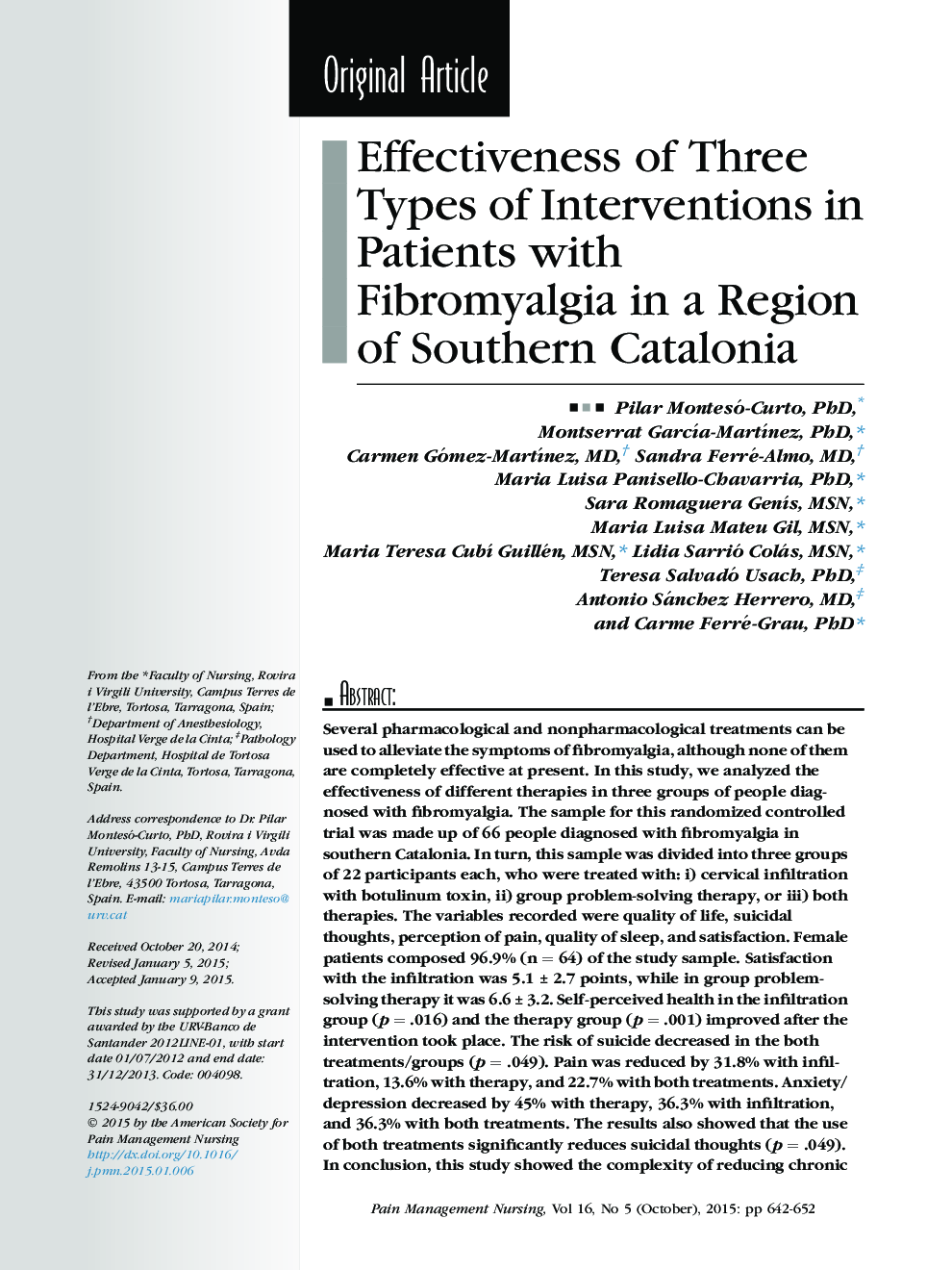| Article ID | Journal | Published Year | Pages | File Type |
|---|---|---|---|---|
| 2677080 | Pain Management Nursing | 2015 | 11 Pages |
Several pharmacological and nonpharmacological treatments can be used to alleviate the symptoms of fibromyalgia, although none of them are completely effective at present. In this study, we analyzed the effectiveness of different therapies in three groups of people diagnosed with fibromyalgia. The sample for this randomized controlled trial was made up of 66 people diagnosed with fibromyalgia in southern Catalonia. In turn, this sample was divided into three groups of 22 participants each, who were treated with: i) cervical infiltration with botulinum toxin, ii) group problem-solving therapy, or iii) both therapies. The variables recorded were quality of life, suicidal thoughts, perception of pain, quality of sleep, and satisfaction. Female patients composed 96.9% (n = 64) of the study sample. Satisfaction with the infiltration was 5.1 ± 2.7 points, while in group problem-solving therapy it was 6.6 ± 3.2. Self-perceived health in the infiltration group (p = .016) and the therapy group (p = .001) improved after the intervention took place. The risk of suicide decreased in the both treatments/groups (p = .049). Pain was reduced by 31.8% with infiltration, 13.6% with therapy, and 22.7% with both treatments. Anxiety/depression decreased by 45% with therapy, 36.3% with infiltration, and 36.3% with both treatments. The results also showed that the use of both treatments significantly reduces suicidal thoughts (p = .049). In conclusion, this study showed the complexity of reducing chronic pain and increasing the quality of life of people with fibromyalgia.
